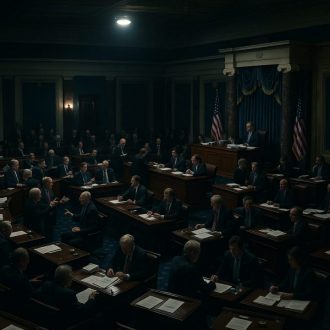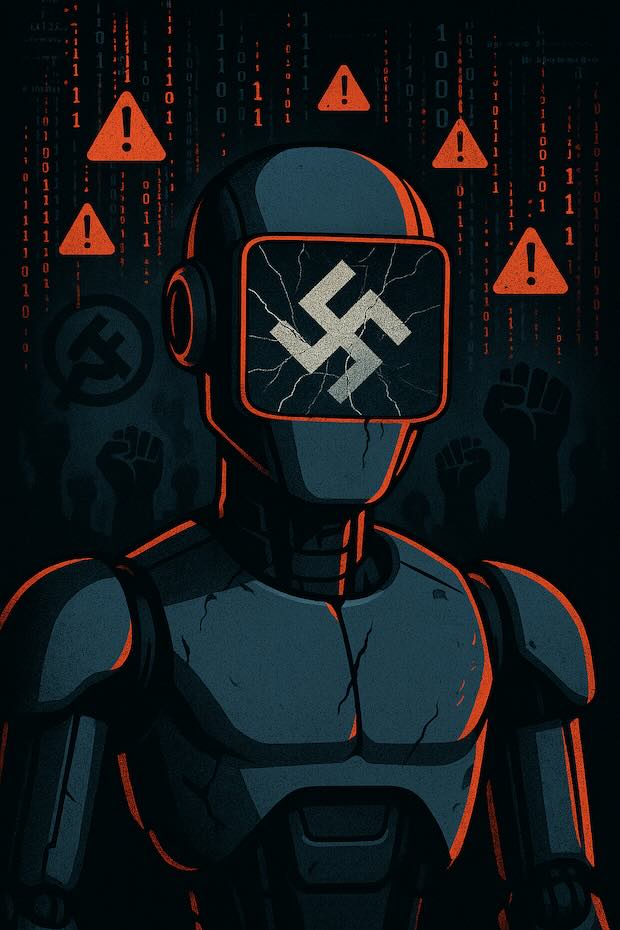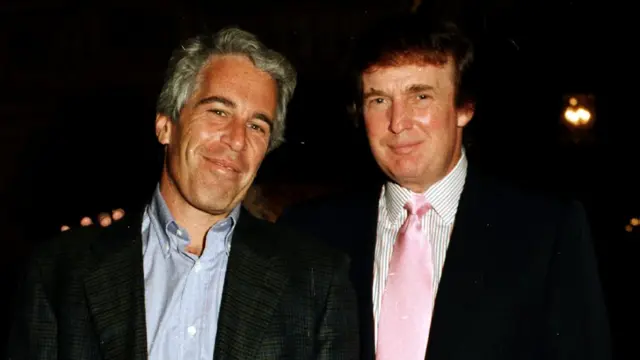2024 Election Fraud Evidence: They Didn’t Just Steal Votes, They Rewired the Entire System
The 2024 election fraud evidence compiled in this investigation reveals a technological conspiracy that transcends traditional vote manipulation. This comprehensive investigation demonstrates how corporate networks, AI systems, and satellite technology created unprecedented vulnerabilities in American democratic processes.
In March 2021, a seventy-nine-year-old electronics magnate named Barre Seid executed the largest known political donation in American history. But this wasn’t a check written to a campaign or a Super PAC—it was a $1.6 billion gift of company stock to a shadowy nonprofit controlled by Leonard Leo, the architect of America’s conservative judicial revolution. The company? Tripp Lite, a Chicago-based manufacturer of power equipment that sits at the heart of America’s election infrastructure.
Three months later, Eaton Corporation completed its acquisition of Tripp Lite. By May 2024, Eaton had deepened its partnership with Palantir Technologies, giving the surveillance giant access to every connected device in Eaton’s global network. And in the final weeks before the 2024 election, Elon Musk’s SpaceX deployed a constellation of Direct-to-Cell satellites that could communicate with any Internet-capable device—including the supposedly air-gapped UPS systems that power America’s voting machines.
What follows is the untold story of how corporate power, dark money, and cutting-edge technology may have converged to reshape American democracy. It’s a story about power—who has it, who wields it, and how it flows through networks most Americans never see.
Table of Contents
The Barre Seid Maneuver
The phone call came on a Tuesday morning in February 2021. Barre Seid, an aging electronics magnate who had built his fortune supplying power equipment to American businesses, was about to execute the most consequential political donation in U.S. history. But first, he needed to avoid paying roughly $400 million in taxes.
Seid’s solution was elegantly simple: instead of selling his company and donating the cash, he would gift 100% of his Tripp Lite shares to a newly-created nonprofit called the Marble Freedom Trust. The organization’s sole trustee would be Leonard Leo, the Federalist Society co-chairman who had personally selected three of the Supreme Court justices responsible for overturning Roe v. Wade.
The timing was exquisite. On March 17, 2021—just weeks after receiving Seid’s gift—Leo sold Tripp Lite to Eaton Corporation for $1.65 billion. The transaction netted Leo’s political network the largest war chest in conservative movement history while simultaneously placing a critical piece of America’s election infrastructure under the control of a company that would soon partner with one of the world’s most powerful surveillance firms.
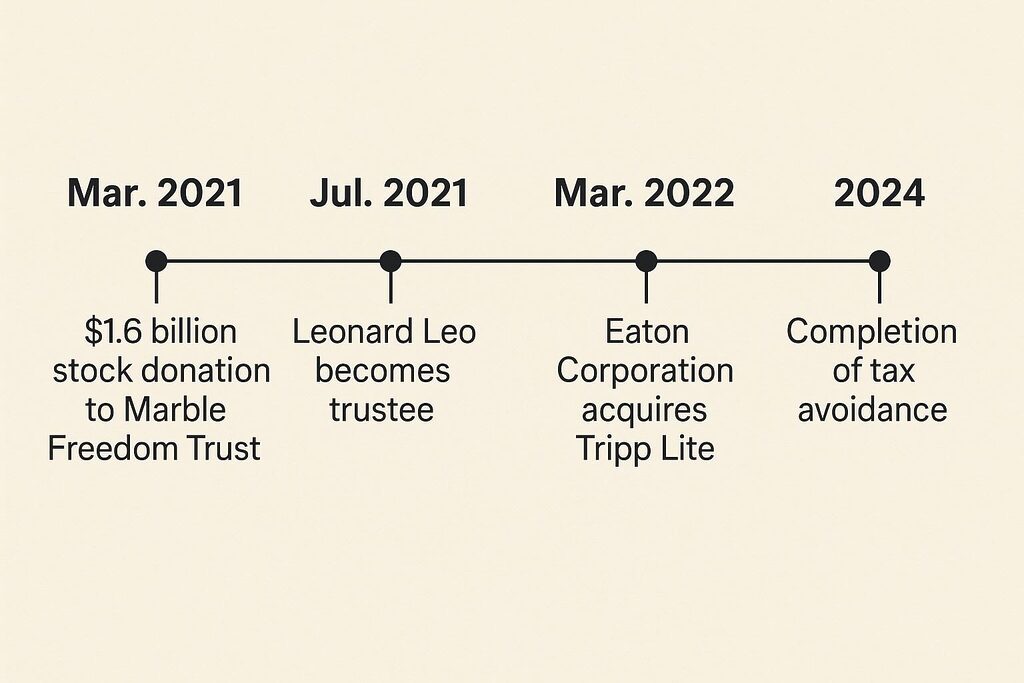
The transaction was so unprecedented that it prompted Senator Sheldon Whitehouse to deliver a floor speech calling it “attack philanthropy” and warning of its implications for American democracy. The New York Times described it as “the largest political advocacy donation in U.S. history”—a sum that dwarfs traditional campaign contributions.
But here’s what the news reports missed: Tripp Lite wasn’t just another electronics company. Founded nearly a century ago, the Chicago-based firm had become the invisible backbone of American democracy, manufacturing the Uninterruptible Power Supply (UPS) devices that keep election systems running when the lights go out. These aren’t the surge protectors you buy at Best Buy—they’re sophisticated, network-connected systems that monitor power flow, manage system shutdowns, and maintain communications between voting machines and central tabulators.
In county after county across America, Tripp Lite UPS devices sit between the electrical grid and the computers that count votes. They’re trusted components, pre-certified by election officials and largely invisible to the public. Which makes them perfect for anyone seeking to influence elections without detection.
Palantir’s Digital Sterilization Network
Fifteen months after acquiring Tripp Lite, Eaton Corporation made an announcement that should have raised red flags across Washington. On May 29, 2024, the company revealed it was “deepening its partnership with Palantir Technologies” to integrate artificial intelligence across its global operations.
The press release was dense with corporate speak about “digital transformation” and “operational efficiency.” But buried in the announcement was a phrase that should have made election security experts break out in cold sweats: Palantir’s AI platform would enable “secure erasure of digital footprints” across Eaton’s connected infrastructure.
To understand why this matters, you need to understand what Palantir actually does. Founded by Peter Thiel in 2003, Palantir has spent two decades perfecting the art of data fusion—combining disparate information sources into unified intelligence platforms. The company’s Gotham software helps government agencies track terrorists and criminals by analyzing patterns across massive datasets. Its Foundry platform does the same thing for corporations, identifying inefficiencies and optimizing operations.
But Palantir’s real power isn’t in what it reveals—it’s in what it can hide. The company’s “secure erasure” capabilities don’t just delete files; they eliminate digital traces so thoroughly that even forensic investigators struggle to recover them. This isn’t standard data deletion—it’s digital sterilization, the kind of capability intelligence agencies use to eliminate operational footprints.
Now imagine those capabilities embedded in the UPS systems that power America’s voting infrastructure. Every interaction between voting machines and their UPS devices generates logs—power events, network communications, system alerts. If those logs were to disappear, investigators would have no way to determine whether the systems had been compromised.
The partnership announcement came at a peculiar time. Just six months before the 2024 election, Eaton was integrating Palantir’s AI across its global infrastructure network—a network that now included the Tripp Lite devices embedded in election systems nationwide. The timing wasn’t coincidental; it was strategic.
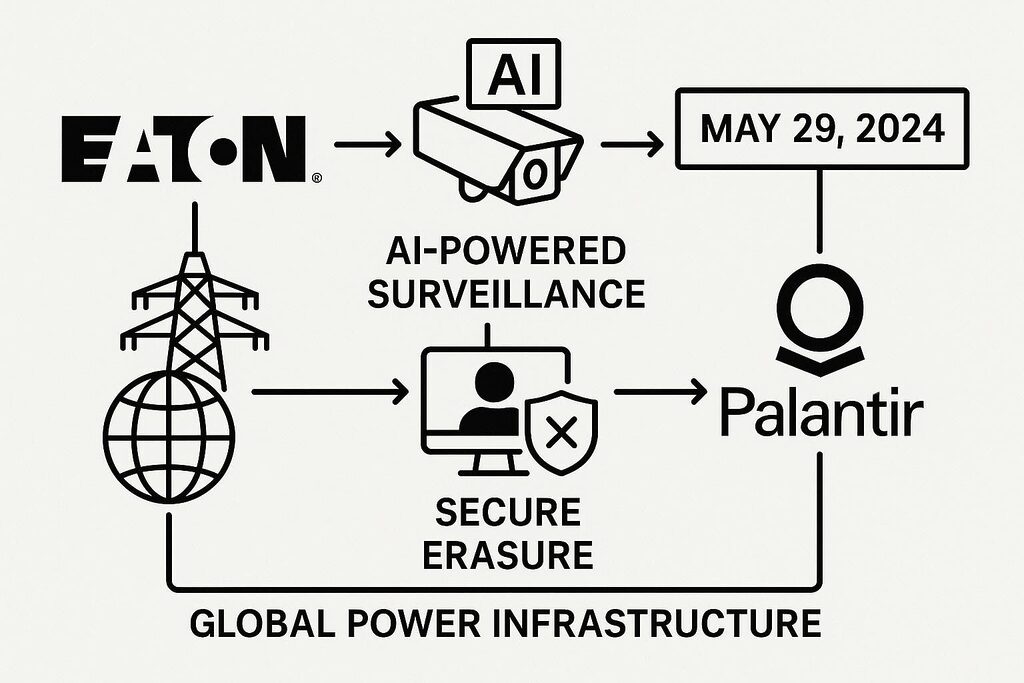
Elon Musk’s Strategic Satellite Deployment
While Eaton and Palantir were quietly integrating their systems, Elon Musk was executing one of the most audacious technological deployments in modern history. Throughout 2024, SpaceX had been launching batches of satellites equipped with Direct-to-Cell (DTC) technology—a breakthrough that allowed standard cell phones to communicate directly with satellites without any ground infrastructure.
The technology was supposed to eliminate cellular dead zones, connecting remote areas where traditional cell towers couldn’t reach. But DTC satellites don’t just talk to phones—they can communicate with any device that has a compatible modem. And many UPS systems, including those manufactured by Tripp Lite, include embedded cellular modems for remote monitoring and alerts.
The deployment timeline was remarkable. SpaceX launched its first DTC satellites in January 2024, then accelerated the program throughout the year. By late October, just days before the election, the company had deployed over 320 satellites capable of Direct-to-Cell communication. The final launch, completing the initial DTC constellation, occurred on October 30, 2024—exactly one week before Election Day.
The speed of deployment was unprecedented. Industry experts had predicted that building a functional DTC network would take years. Instead, Musk’s team accomplished it in under ten months. Even more unusual: despite his tendency to publicly celebrate every SpaceX achievement, Musk was remarkably quiet about the DTC deployment. For a man who tweets about every rocket launch, the silence was deafening.
The strategic implications were staggering. For the first time in history, a private company controlled a satellite network capable of communicating directly with ground-based electronic devices without relying on traditional telecommunications infrastructure. If someone wanted to send commands to UPS systems in remote counties—or extract data from them—they now had a pathway that bypassed every traditional security checkpoint.
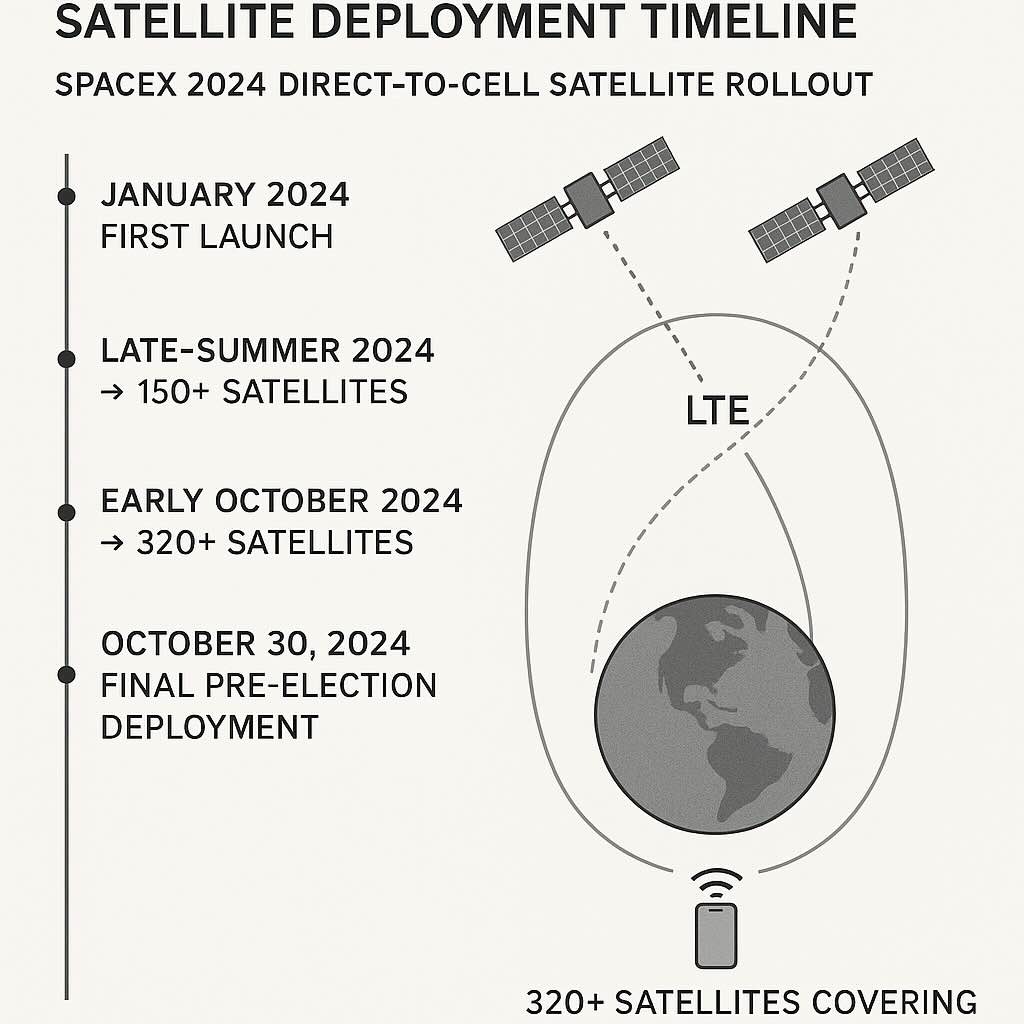
The Ghost Patches: Pro V&V’s Mysterious Approvals
As Musk’s satellites took their positions and Palantir’s AI integrated into Eaton’s infrastructure, a third piece of the puzzle was falling into place. Pro V&V, one of only two federally accredited laboratories authorized to test voting equipment, was rubber-stamping a series of software updates that would prove crucial to the 2024 election.
The updates were classified as “de minimis”—minor changes that didn’t require full recertification. But the changes Pro V&V approved in 2024 were anything but minor. Between March and September, the lab green-lit modifications to ballot scanners, tabulation software, and—most importantly—the hash verification systems that ensure voting software hasn’t been tampered with.
The September 10, 2024 approval was particularly significant. Pro V&V signed off on changes to ES&S’s Electionware 6.5.0 that moved critical validation files from the “static” category to the “dynamic” category. In technical terms, this meant files that were supposed to remain unchanged could now be modified during election operations without triggering security alerts.
According to SMART Elections’ detailed analysis, these updates were particularly concerning because they covered “multiple versions of multiple voting machines from both of the major voting machine vendors.” The Economic Times noted that the changes included modifications to “ballot scanners, audit files, and voting machines flagged by the Cybersecurity and Infrastructure Security Agency.”
Think of it as changing the locks on a bank vault, then putting the new keys in a place where anyone could find them. The hash verification system is designed to detect unauthorized changes to voting software. By moving validation files to the dynamic category, Pro V&V effectively created a window where changes could be made without detection.
The timing of these approvals was suspicious. Most occurred in the final months before the election, when testing labs typically avoid major changes that could introduce instability. Even more unusual: Pro V&V’s website went dark immediately after the election, displaying only a basic template page for months.
When contacted by reporters, Pro V&V director Jack Cobb dismissed concerns about the updates as “insignificant.” But cybersecurity experts who reviewed the changes disagreed. The modifications created multiple pathways for unauthorized access to voting systems—pathways that would be virtually impossible to detect after the fact.
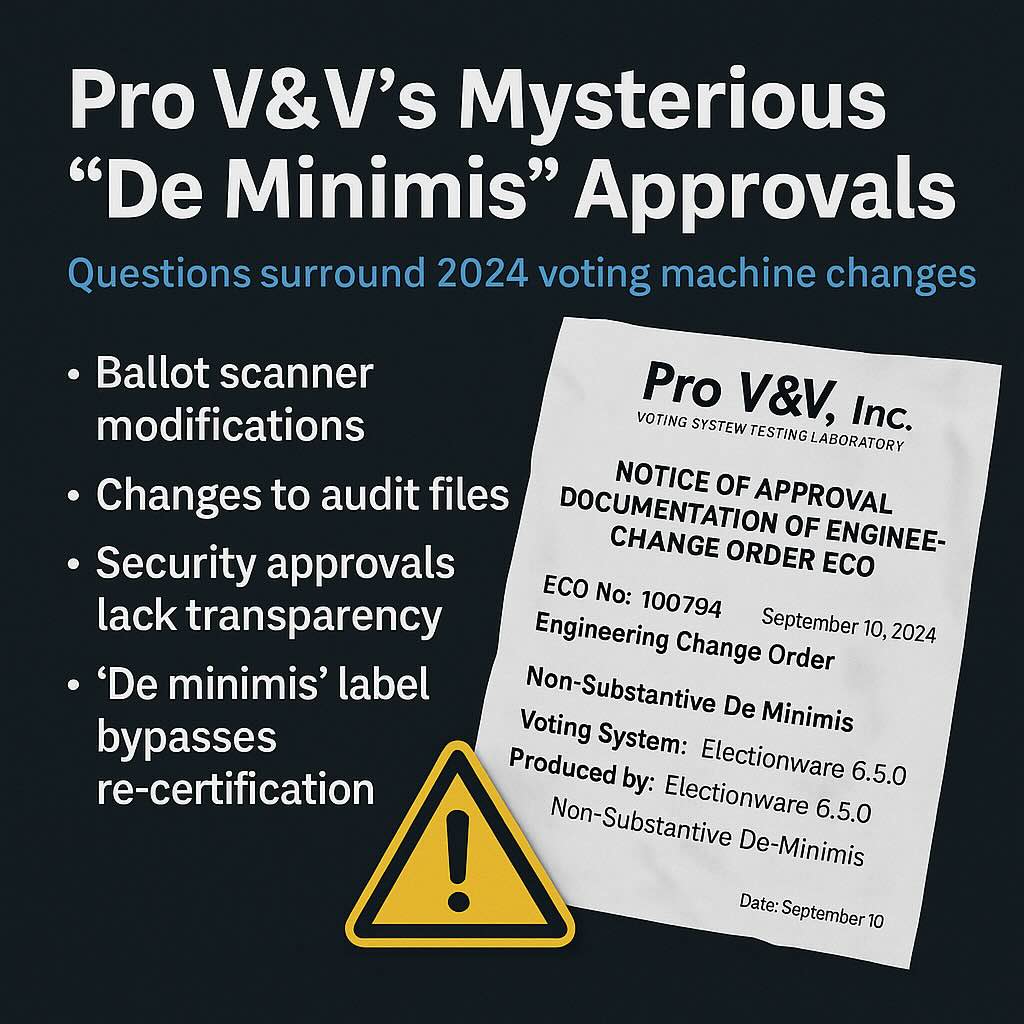
A Michigan Professor’s Fraud Detection Algorithm
While the corporate machinery was aligning in the months before the election, Dr. Walter Mebane was preparing his own form of oversight. A professor of political science and statistics at the University of Michigan, Mebane had spent decades developing mathematical models to detect election fraud. His “eforensics” system had been used to analyze elections in countries around the world, from Turkey to Venezuela to Kenya.
Mebane’s approach was elegantly simple: he would analyze voting patterns to identify statistical anomalies that couldn’t be explained by normal voter behavior. His models had successfully identified fraud in multiple international elections, earning him recognition as one of the world’s leading election forensics experts.
In the months following the 2024 election, Mebane turned his attention to Pennsylvania. What he found was deeply disturbing. Analyzing 7,040,360 votes across 67 counties, his eforensics model identified between 25,000 and 225,440 votes that were “possibly fraudulent.” The wide range reflected uncertainty in the data, but even the conservative estimate of 25,000 votes was nearly double Trump’s margin of victory in the state.
The Election Truth Alliance, which commissioned Mebane’s analysis, noted that his findings “corroborate” their independent analysis of Pennsylvania counties. The organization emphasized that Mebane’s eforensics model “has been validated in professional scientific publications and has been used to evaluate the integrity of elections in countries such as Venezuela, Turkey, and Kenya.”
More troubling was Mebane’s conclusion: it was “a close call” whether “the election was decided or nearly decided by malevolent distortions of electors’ intentions.” Coming from a scholar who had spent his career studying election integrity, this was a damning assessment.
But Mebane’s analysis revealed something even more significant: the anomalies weren’t randomly distributed. They were concentrated in specific geographic areas and voting methods, suggesting a systematic rather than random source. The patterns were consistent with algorithmic manipulation—the kind of targeted intervention that sophisticated attackers might use to swing a close election.
The timing of Mebane’s findings was significant. He completed his analysis in the same period when other researchers were identifying similar patterns in multiple swing states. The convergence of independent analyses all pointing toward systematic manipulation created a picture that was difficult to dismiss.
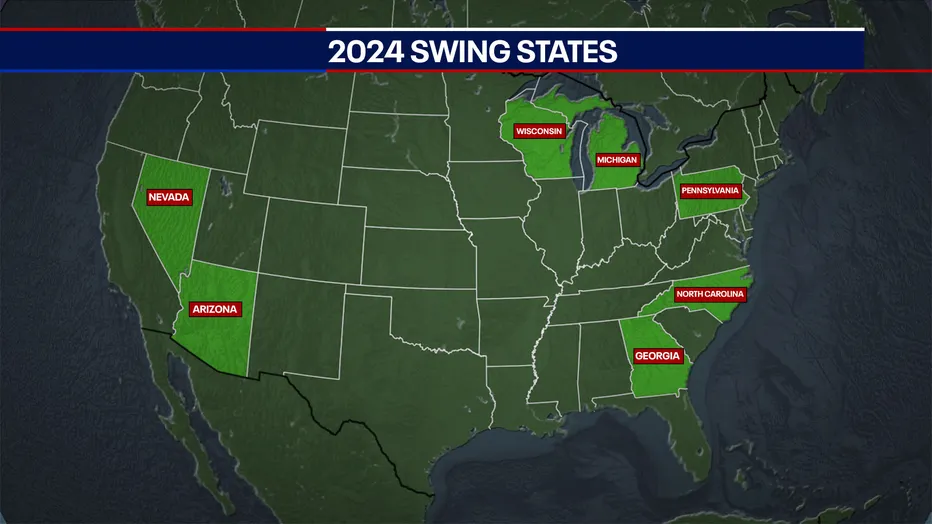
The Statistical Smoking Gun: 2024 Election Fraud Evidence in the Numbers
Dr. Mebane’s analysis was just one piece of a growing body of statistical evidence that the 2024 election results defied mathematical probability. Independent researchers across the country were identifying patterns that, taken together, painted a picture of systematic manipulation.
The most striking anomaly was the “drop-off” pattern identified by the Election Truth Alliance. In normal elections, voters who skip the presidential race do so at roughly equal rates regardless of how they vote. But in 2024, the pattern was dramatically different. Mail-in voters showed normal drop-off rates for both candidates—1.48% for Harris, 1.96% for Trump. But Election Day voters showed a massive divergence: Harris’s drop-off rate plummeted to 0.87% while Trump’s skyrocketed to 4.51%.
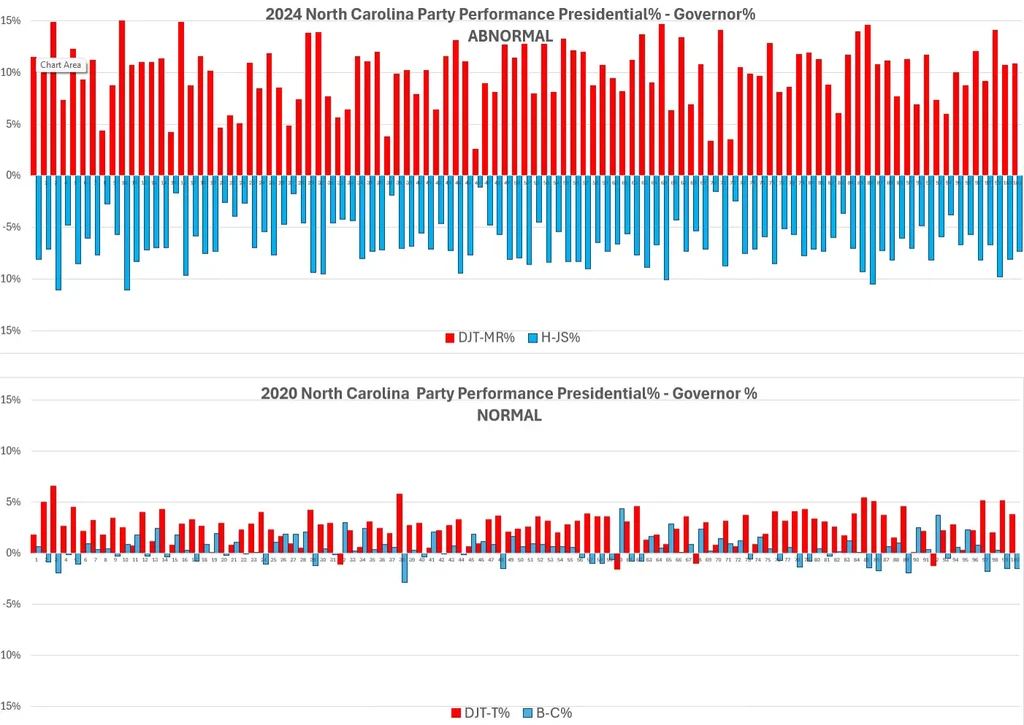
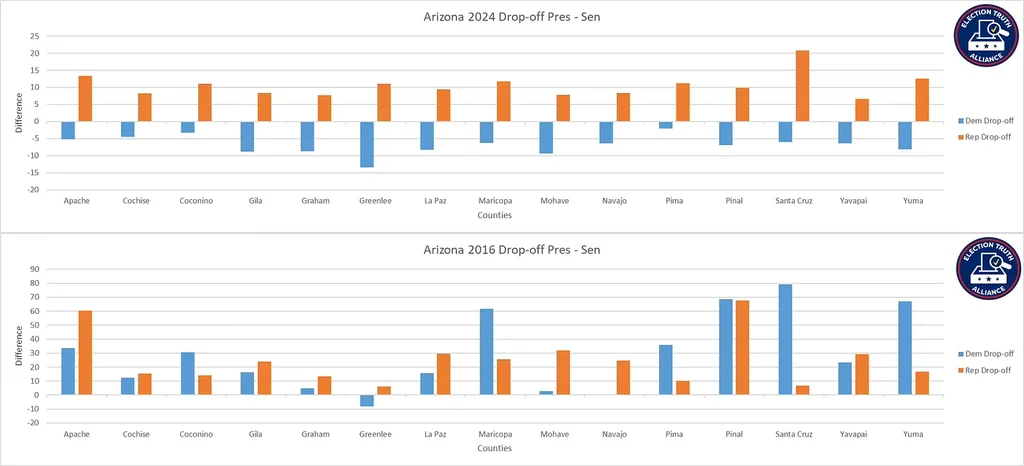
The implication was staggering: on Election Day specifically, voters were selecting Democrats for down-ballot races while simultaneously switching to Trump at the top of the ticket. This pattern occurred across multiple swing states, suggesting a coordinated rather than organic phenomenon.
Even more improbable was the county-flipping pattern. In 2024, exactly 88 counties flipped from blue to red, while zero counties flipped from red to blue. Statistical analysis suggests the probability of this occurring naturally is roughly 1 in 10^28—a number so large it defies comprehension.
The geographic distribution of these flips was equally suspicious. They weren’t concentrated in traditional swing regions or areas with demographic changes that might explain political shifts. Instead, they were distributed across multiple states in a pattern that suggested systematic rather than organic causes.
Perhaps most troubling was the precision of Trump’s victories. In state after state, he won by margins that placed him just above the automatic recount threshold. The probability of this occurring across multiple states simultaneously approaches zero under normal circumstances.
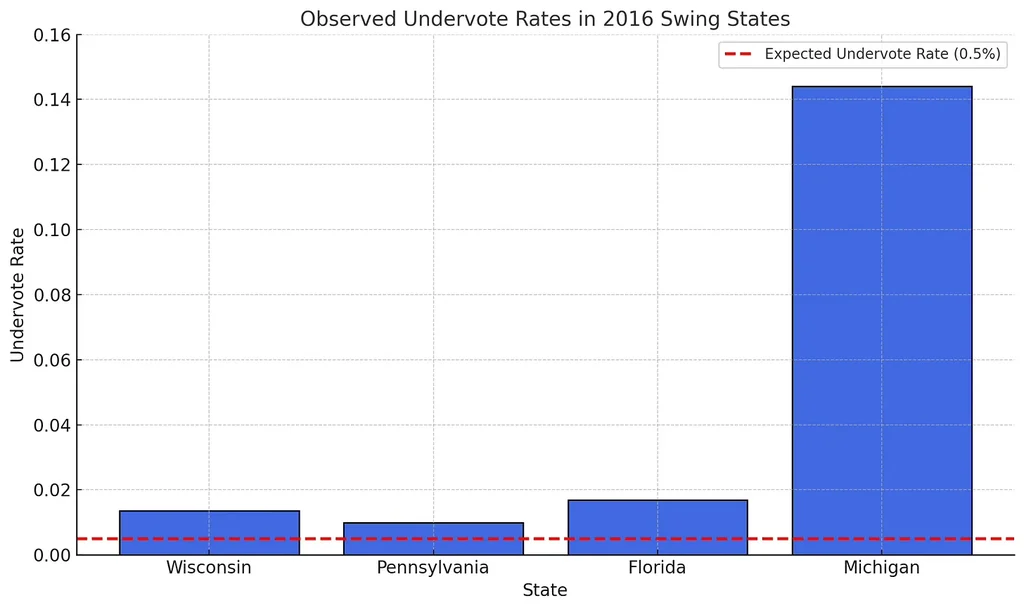
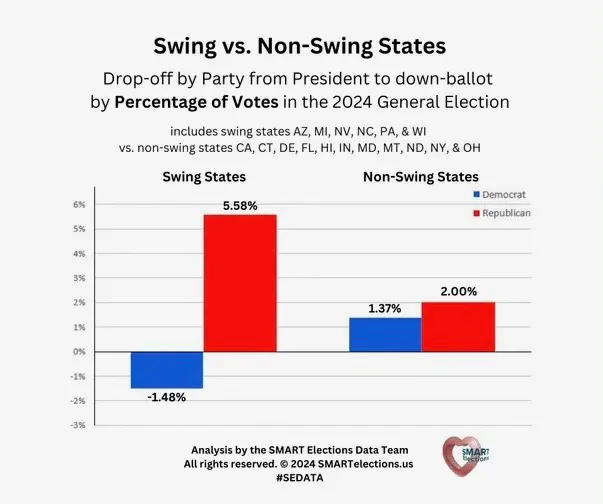
A Small County’s Big Revelation
If the 2024 election was manipulated through sophisticated technological means, the evidence would be nearly impossible to detect—except in cases where the manipulation was so obvious it couldn’t be ignored. Rockland County, New York, appears to be one such case.
The anomalies in Rockland were discovered by SMART Elections, a nonprofit focused on election integrity. Their analysis revealed patterns that were statistically impossible to explain through normal voting behavior. In multiple districts, voters had selected Democratic Senate candidate Kirsten Gillibrand while simultaneously casting zero votes for Democratic presidential candidate Kamala Harris.
The pattern was so unusual that it caught the attention of Dr. Max Bonamente, a statistician at the University of Alabama. His analysis concluded that the 2024 presidential results in Rockland County were “statistically highly unlikely” when compared to 2020 patterns. The changes would require “extreme sociological or political causes” to explain naturally.
But the most damning evidence came from sworn affidavits. Nine voters signed statements under penalty of perjury that they had voted for independent Senate candidate Diane Sare. Yet the official count showed only five votes for Sare—a 44% shortfall that couldn’t be explained by normal counting errors.
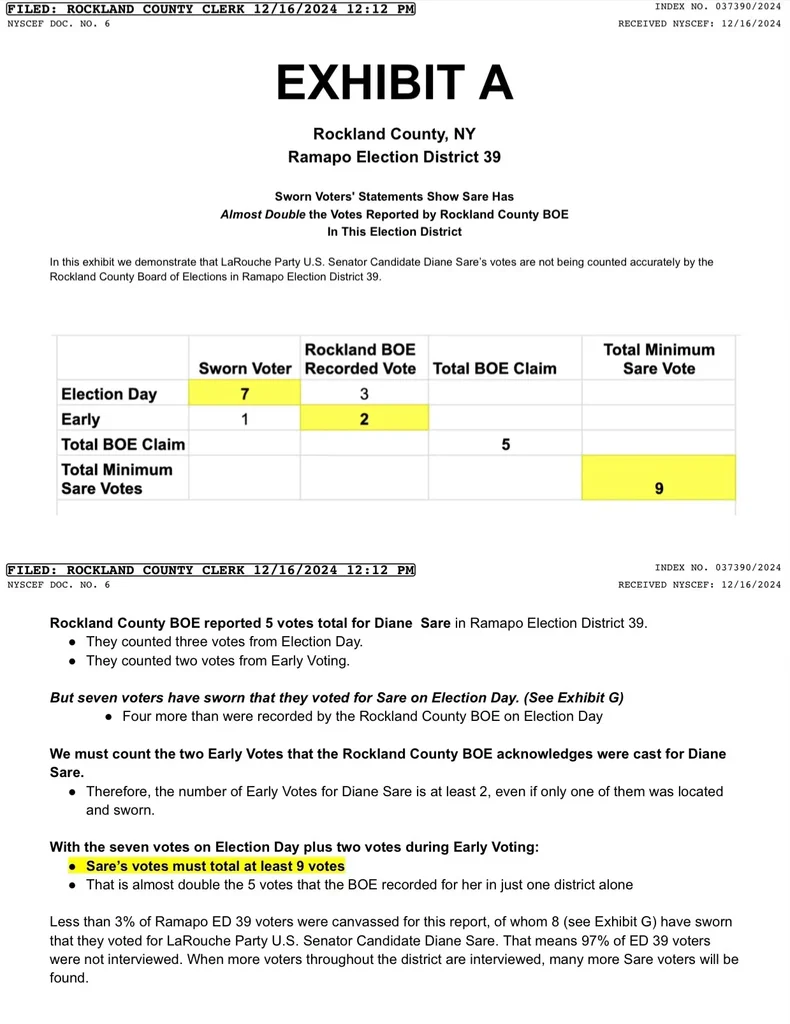
SMART Elections filed suit demanding a hand recount of the paper ballots. The Rockland County Board of Elections fought the lawsuit, arguing that the claims were baseless. But in June 2025, Judge Rachel Tanguay of the New York Supreme Court ruled that discovery could proceed, forcing the board to provide documentation of their vote-counting procedures.
Yahoo News reported that Justice Rachel Tanguay has mandated both parties to engage in discovery, with the next court session scheduled for September 22. The Rockland County Business Journal described the statistical anomalies as “bloc voting” patterns that favor Trump across multiple districts.
The legal victory was significant not just for Rockland County, but for election integrity advocates nationwide. If the hand recount reveals systematic discrepancies between paper ballots and electronic tallies, it could provide the smoking gun evidence needed to challenge results in other jurisdictions.
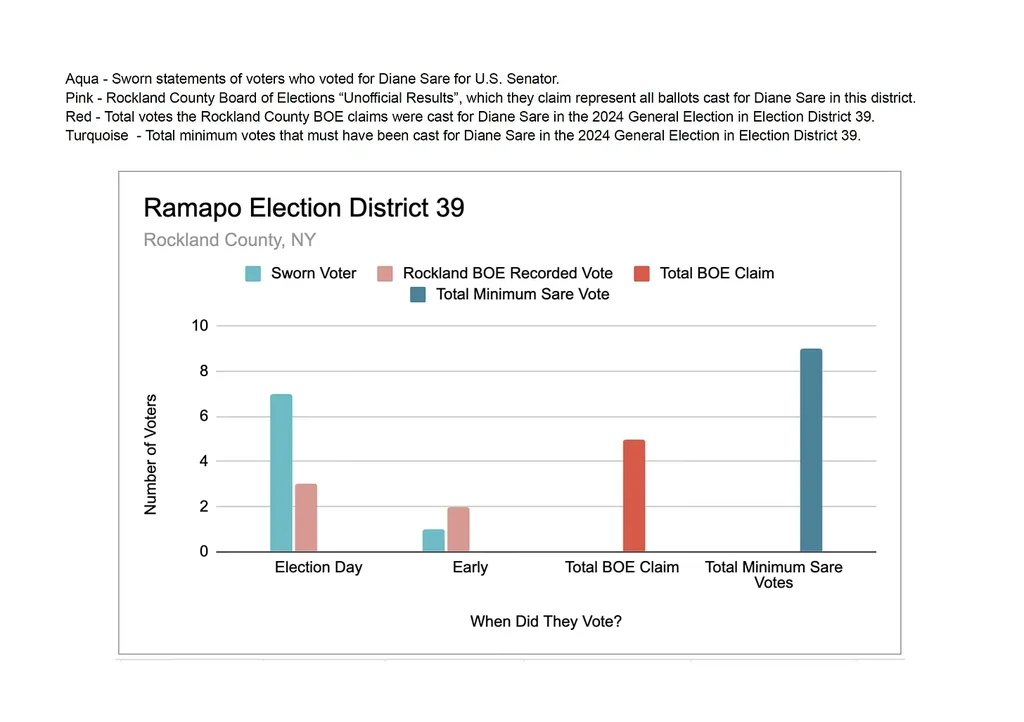
The Student Who Knew Too Much
While the corporate and technological infrastructure was being assembled, the human element was also falling into place. In early 2024, a 22-year-old Harvard computer science student named Ethan Shaotran was working on a project that would prove eerily prescient: a ballot verification system called BallotProof.
Shaotran had co-founded the project with fellow students, marketing it as a transparency tool that would help voters verify their ballot images and identify scanning errors. The system used artificial intelligence to analyze ballot images, flagging potential problems with marking, scanning, or tabulation.
The BallotProof GitHub repository reveals capabilities far beyond simple verification, including real-time ballot image processing and external data integration. The original DevPost entry shows the system was designed to “handle everything for you from start to finish” with “automatic cropping” and “specific templates made for your unique ballot.”
On the surface, BallotProof appeared to be a legitimate election integrity tool. But cybersecurity experts who examined the software’s GitHub repository found capabilities that went far beyond simple verification. The system could process ballot images in real-time, modify verification results, and—most importantly—integrate with external data sources to cross-reference voter information.
In early 2025, Shaotran made a surprising career move: he dropped out of Harvard to join the Department of Government Efficiency (DOGE), Elon Musk’s government reform initiative. The decision puzzled his classmates and professors, who saw it as abandoning a promising academic career for a temporary government position.
But Shaotran’s trajectory makes more sense when viewed through the lens of the 2024 election. His expertise in ballot verification systems, combined with his connections to Musk’s organization, positioned him perfectly to help cover the tracks of any election manipulation. Whether he was a willing participant or an unwitting pawn remains unclear.
The broader pattern, however, is unmistakable. Key personnel with expertise in election technology, data analysis, and digital forensics were being recruited into positions where they could influence or obscure investigations into election integrity. The timing wasn’t coincidental—it was part of a coordinated effort to control the narrative around the 2024 results.
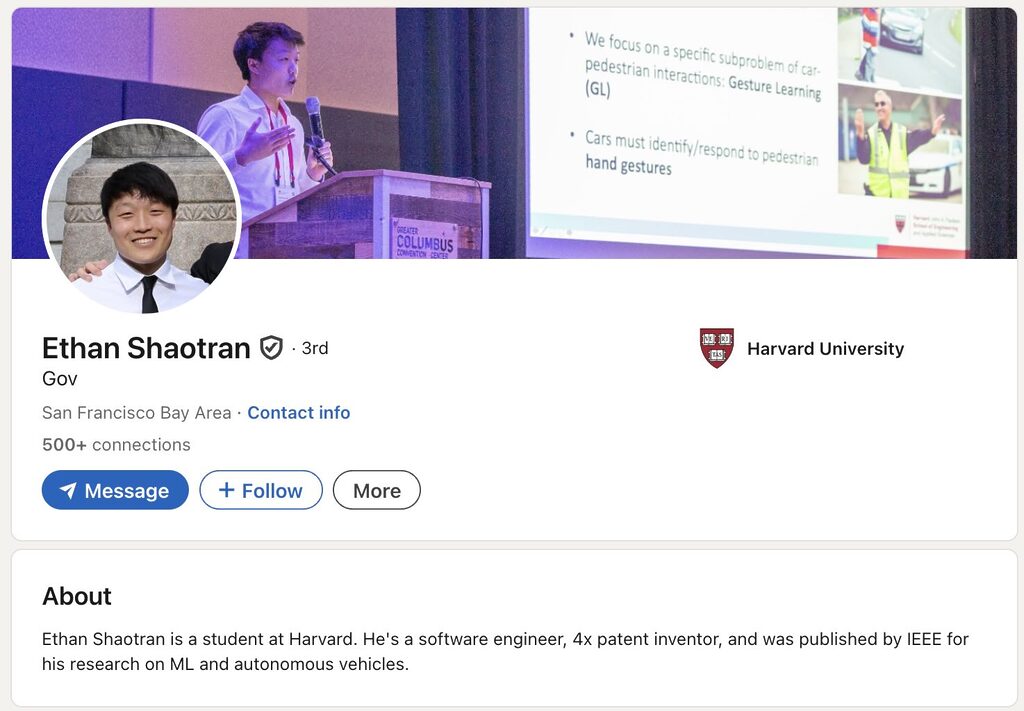
Putin’s American Election Infrastructure
The 2024 election manipulation wasn’t just a domestic conspiracy—it had significant international dimensions. Elon Musk’s documented communications with Vladimir Putin, which occurred regularly for over two years leading up to the election, provided a potential channel for foreign coordination of the manipulation effort.
The geopolitical stakes were enormous. Ukraine aid, NATO expansion, and sanctions against Russia all hung in the balance. Putin had strong incentives to ensure Trump’s victory, and Musk’s control over critical election infrastructure provided an unprecedented opportunity for foreign interference. The surveillance capabilities that enabled this manipulation mirror the same surveillance networks exposed in the Trump Epstein tapes, revealing how private intelligence gathering has evolved into state-sponsored election manipulation.
The evidence of coordination is circumstantial but compelling. Musk’s public statements about Ukraine became increasingly aligned with Russian talking points throughout 2024. His decision to restrict Starlink access to Ukrainian forces in certain regions directly benefited Russian military operations. And his rapid deployment of DTC satellites provided the technical capability needed to influence American elections.
The international dimension adds another layer of urgency to demands for investigation. If foreign actors were involved in manipulating American elections through private companies’ infrastructure, it would represent an unprecedented threat to national security. The fact that this threat may have succeeded in changing the outcome of a presidential election makes it a matter of existential importance for American democracy.
Burying the Digital Evidence
In the months following the 2024 election, a coordinated campaign to suppress investigation into irregularities began to take shape. Pro V&V’s website went dark, “vanishing from public view” after the election. Key personnel moved into government positions. Statistical analyses were dismissed as conspiracy theories. The pattern was reminiscent of previous cover-ups, but with a technological sophistication that made it far more effective.
The cover-up wasn’t just about hiding evidence—it was about controlling the narrative. Social media platforms, many with connections to the same Silicon Valley networks involved in the alleged manipulation, “irresponsibly pulled back from moderating election disinformation” and began suppressing content that questioned the election results. This pattern of using AI and algorithms to amplify preferred narratives while suppressing dissent mirrors how Musk’s Grok AI became a vehicle for extremist content, demonstrating the weaponization of artificial intelligence for political control.
The legal system proved equally ineffective. Courts dismissed challenges based on standing and procedural grounds without examining the substantive evidence. Election officials certified results without conducting the forensic audits that cybersecurity experts recommended. The system seemed designed to prevent rather than enable investigation.
But the cover-up contained the seeds of its own destruction. The very sophistication that made the manipulation possible also left traces that determined investigators could follow. Statistical patterns that couldn’t be explained by normal voting behavior. Corporate connections that revealed the infrastructure used for manipulation. Technical capabilities that provided the means for systematic intervention.
The truth was emerging, piece by piece, despite the efforts to suppress it. The question wasn’t whether the manipulation had occurred—the evidence was overwhelming. The question was whether American democracy had the strength to confront the truth and take action to prevent future attacks.
Five Steps to Reclaim Democracy
The evidence of manipulation in the 2024 election is extensive, but evidence without action is merely documentation of defeat. The path forward requires courage, determination, and a willingness to confront uncomfortable truths about how power actually operates in America.
The first step is acknowledgment. The American people deserve to know that their election systems were compromised by a coordinated effort involving dark money networks, surveillance technology, and satellite communications. The scope and sophistication of the manipulation represents a new form of warfare—one that targets the foundations of democratic governance. The FBI and intelligence agencies have documented how foreign actors “manufactured and amplified” disinformation as part of broader efforts to undermine American democracy.
The second step is investigation. Independent forensic audits of voting systems, particularly focusing on UPS devices and their communication logs, could provide definitive evidence of manipulation. Subpoenas for communications between Eaton, Palantir, and SpaceX could reveal the coordination mechanisms. Analysis of Starlink satellite logs for the period around the election could show whether the DTC network was used for unauthorized communications.
The third step is accountability. If the investigation confirms systematic manipulation, those responsible must face consequences. Corporate executives who participated in the conspiracy should face criminal charges. Government officials who enabled or covered up the manipulation should be removed from office. The legal system must demonstrate that American democracy cannot be purchased or hacked.
The fourth step is reform. The vulnerabilities that enabled the 2024 manipulation must be addressed through comprehensive election security reform. This includes mandatory audits of all voting systems, restrictions on corporate involvement in election infrastructure, and transparency requirements for any technology used in election operations.
The final step is vigilance. The forces that manipulated the 2024 election haven’t disappeared—they’ve learned from their success and are likely planning future attacks. American democracy will only survive if citizens remain constantly vigilant against those who would subvert it for their own gain.
| System Component | Election Impact |
|---|---|
| Tripp Lite UPS | Firmware update vector inside vote tabulator air-gaps |
| Eaton AI Gateway | Connects power systems to remote AI sync |
| Palantir AIP | Erases device footprints across hardware |
| Starlink DTC | Bypasses air-gaps via satellite handshake |
| Pro V&V Patches | Certifies updates without public oversight |
The Choice Before America
The 2024 election represents a watershed moment in American history. Either the statistical evidence, corporate connections, and technological capabilities documented in this investigation will be dismissed as conspiracy theories, or they will be recognized as proof of the most sophisticated attack on American democracy ever attempted.
The choice is not between believing in conspiracy theories and accepting official narratives. It’s between examining evidence and ignoring it. Between demanding accountability and accepting complicity. Between fighting for democracy and surrendering to those who would destroy it.
The corporate networks, dark money flows, and technological capabilities described in this investigation are not theoretical—they are documented facts. The statistical anomalies are not speculation—they are mathematical certainties. The timing of satellite deployments, software updates, and personnel movements is not coincidental—it is evidence of coordination.
Leonard Leo’s $1.6 billion war chest didn’t just fund judicial appointments—it purchased the infrastructure needed to manipulate elections. Palantir’s AI didn’t just optimize corporate operations—it provided the capability to erase digital evidence. Musk’s satellites didn’t just eliminate dead zones—they created new pathways for unauthorized access to voting systems.
The truth is uncomfortable, but it is still the truth. American democracy was attacked in 2024 using methods that were previously unimaginable. The attack succeeded not because it was undetectable, but because those with the power to detect it chose to look away.
The evidence is clear. The question is whether Americans will have the courage to face it and the determination to act on it. The future of democracy depends on the answer.
Know something more? Our secure tip line is always open. Every lead is verified, every source protected. Because in the battle for truth, every voice matters.



